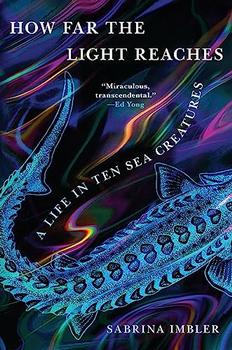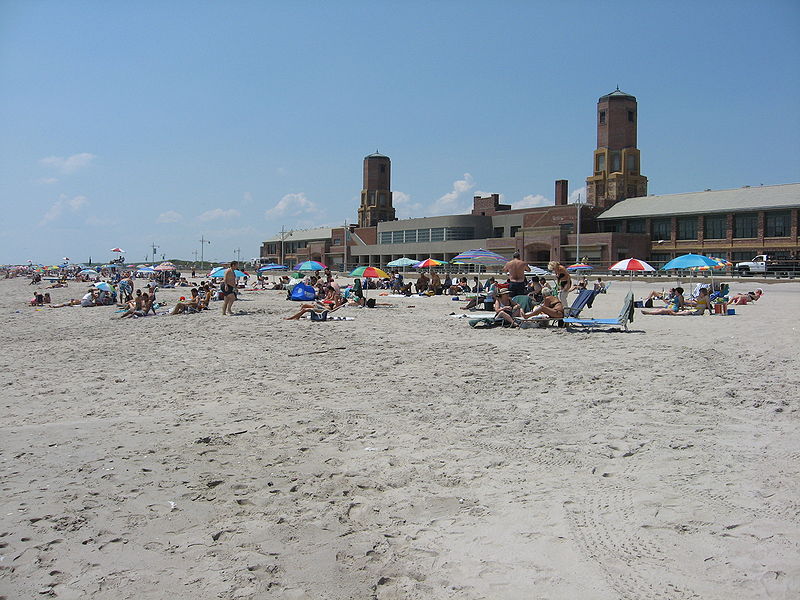Summary | Excerpt | Reviews | Beyond the Book | Read-Alikes | Genres & Themes | Author Bio

A Life in Ten Sea Creatures
by Sabrina ImblerThis article relates to How Far the Light Reaches
 In the essay "We Swarm" from their debut collection How Far the Light Reaches, Sabrina Imbler reflects on their experience finding comfort and kinship in New York City's queer community. The primary setting of this essay is a part of the beach at Jacob Riis Park in the borough of Queens, which, they explain, "had been a gay haven as early as the '40s, or even the '30s." By the 1950s and '60s, the area called "Bay 1" or "the People's Beach" was a popular meeting spot for a diverse group of LGBTQ+ New Yorkers and visitors. A 1963 article in the New York Times reported that Jacob Riis was somewhere "the New York homosexual" could find others of "his kind." In the 1970s, the beach became a hub of political activity for a community seeking avenues of change after the Stonewall Riots, as the newly formed Gay Activists Alliance held voter registration drives there.
In the essay "We Swarm" from their debut collection How Far the Light Reaches, Sabrina Imbler reflects on their experience finding comfort and kinship in New York City's queer community. The primary setting of this essay is a part of the beach at Jacob Riis Park in the borough of Queens, which, they explain, "had been a gay haven as early as the '40s, or even the '30s." By the 1950s and '60s, the area called "Bay 1" or "the People's Beach" was a popular meeting spot for a diverse group of LGBTQ+ New Yorkers and visitors. A 1963 article in the New York Times reported that Jacob Riis was somewhere "the New York homosexual" could find others of "his kind." In the 1970s, the beach became a hub of political activity for a community seeking avenues of change after the Stonewall Riots, as the newly formed Gay Activists Alliance held voter registration drives there.
The beach is named for Danish American journalist and photographer Jacob Riis, who in 1915 partially funded the construction of a tuberculosis hospital called Neponsit Home, which now sits abandoned and dilapidated on the People's Beach. Recently, the city announced plans to tear down the ruins of the hospital and build a public park on the grounds. Regular visitors worry that any changes to the beach and its surroundings could lead to outsiders encroaching on what is considered a sacred place of queer history and community. Ceyenne Doroshow, founder of Gays and Lesbians Living in a Transgender Society, told The City, "There are so many places in New York City that we are not comfortable in. Riis is our home, our dance floor, our marriage place and our burial ground." The latter designation is somewhat literal, as the beach features a memorial to a performer named Ms. Colombia, who drowned there in 2018.
The People's Beach is a place where queer, trans and gender nonconforming people of all kinds can have fun with friends and like-minded strangers. It's more racially diverse than many other popular queer locales in New York City, and it's a safe place for those whose bodies might be outside of the cultural norm. However, police are a regular presence and have been reported cracking down on beachgoers for petty crimes, continuing the NYPD's long history of disproportionately targeting queer spaces.
Mentions of the beach have appeared in works by Audre Lorde and Joan Nestle, and a pivotal scene in Torrey Peters' debut novel Detransition, Baby takes place there as well. Visual artists have also incorporated the beach into their work; photographer Chris Berntsen has a remarkable project called "No Other Name Than Their Own," which combines present-day and historical images taken at Jacob Riis.
Jacob Riis Park, park of the Jamaica Bay Unit of Gateway National Recreational Area and a National Historic Place.
Photo by Padraic Ryan (CC BY-SA 3.0)
Filed under Places, Cultures & Identities
![]() This "beyond the book article" relates to How Far the Light Reaches. It originally ran in January 2023 and has been updated for the
January 2024 paperback edition.
Go to magazine.
This "beyond the book article" relates to How Far the Light Reaches. It originally ran in January 2023 and has been updated for the
January 2024 paperback edition.
Go to magazine.
It is among the commonplaces of education that we often first cut off the living root and then try to replace its ...
Click Here to find out who said this, as well as discovering other famous literary quotes!
Your guide toexceptional books
BookBrowse seeks out and recommends the best in contemporary fiction and nonfiction—books that not only engage and entertain but also deepen our understanding of ourselves and the world around us.